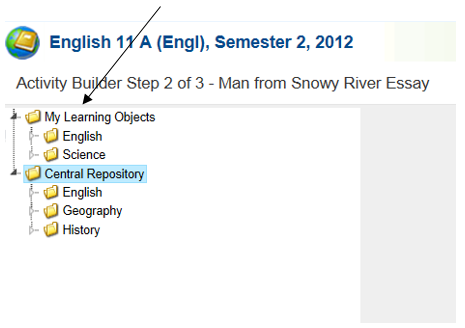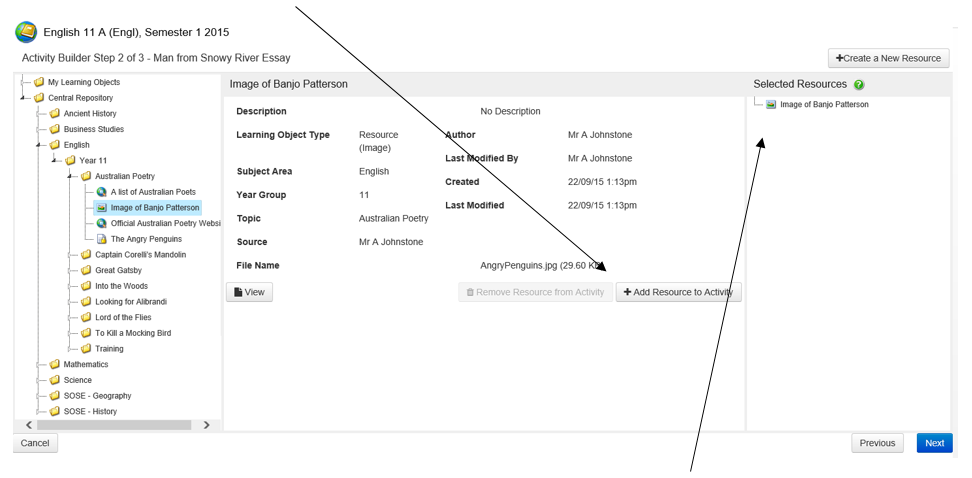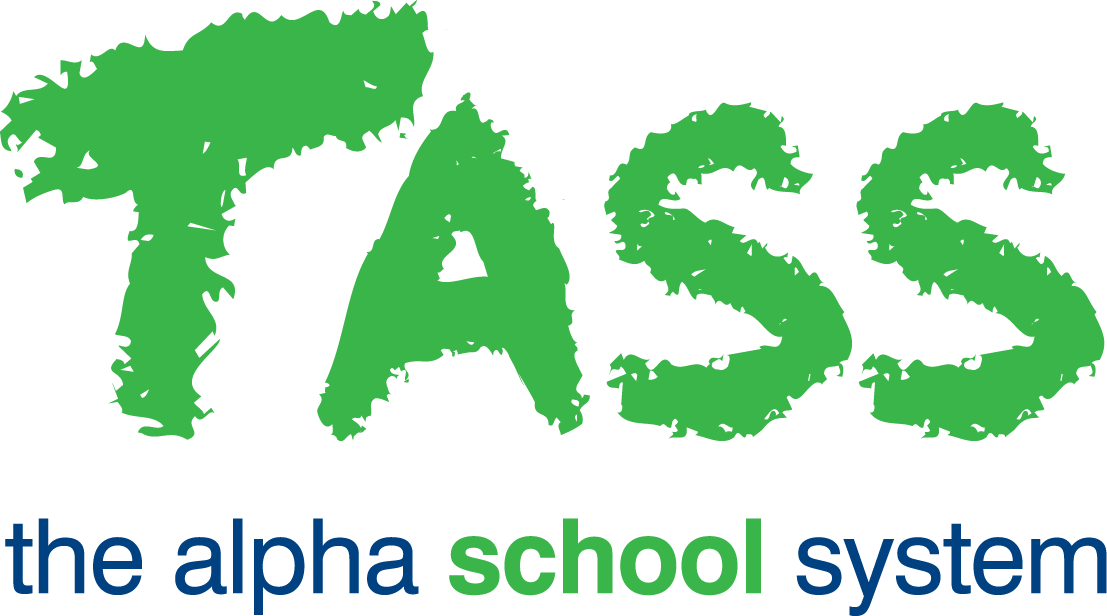wB - Creating a New Activity
From v01.060.01.200, webBook is no longer accessible. The features previously offered by webBook are now available in Staff Kiosk Assessment > Markbook and Enter Results and Comments.
Staff Kiosk has several programs that allow you to create Activities:
Staff Kiosk Home Page > My Timetable. Use the Hamburger menu and select 'Create Activity'.
Staff Kiosk Home Page > My Timetable. Use the Hamburger menu and select 'Create Homework' (this would only be used for Homework Activities that are non-assessable).
Rollcall > Class Rollcall. Use the Hamburger menu and select 'Create Activity'.
Assessment > Learning Objects (Maintain & Assign). Use the 'Create Learning Object' button and select 'Activity'.
Assessment > Markbook > Activity Setup. Use the 'New Activity' button to create a new Activity.
Click the 'New Activity' button to access the three stepped Activity Builder.
Creating a New Activity — Step 1 of 3
This is where you set up the outline for an Activity.
To access this, click the 'New Activity' button on the 'Activity List' screen.
An example of the Activity Builder Step 1:

Learning Object Repository Details
Subject Area | The subject area is important as it will determine the second level in the Learning Object Repository that this Activity will be filed under.  |
Add to My Learning Objects OR | This is important as it will determine the first level in the Learning Object Repository that this Activity will be filed under.  By selecting this option, this Activity will be added to your personal 'My Learning Objects' repository. It will not be added to the school's 'Central Repository' for sharing with other teachers. |
Add to Central Repository | By selecting this option, this Activity will be added to the school's 'Central Repository' under the 'Subject Area' you have chosen. This Activity will be visible to:
|
Year Group | This is important as it will determine the third level in the Learning Object Repository that this Activity will be filed under.  This field will default to the 'Year Group' of the subject class you nominated when first entering this program (Progressive Assessment > Activity Setup) (only if your school is using a non-unitised timetable). |
Topic | This is important as it will determine the fourth level in the Learning Object Repository that this Activity will be filed under.  A topic is best described as a unit of work. For example, in English, students may be studying a topic of Poetry. If you have chosen to add this Activity in the 'Central Repository', this field will provide a list of 'Topics' that already exist in the 'Central Repository' for the 'Subject Area' you have selected. Where you have chosen to file this Activity in 'My Learning Objects', this field will provide a list of 'Topics' that you have previously created. Choose from an existing 'Topic' or create a new 'Topic' using the 'Enter a New Topic' field. |
OR Enter a New Topic | Use this field to create a new 'Topic'; the text that you enter here will create a new folder in the 'Learning Object Repository' under the 'Subject Area' and 'Year Group' you have selected above. |
Activity Details
Source | This field can be used to acknowledge the original author of an Activity. You should check that use of this Activity falls within your school's Copyright guidelines, and completion of this field also adheres to school guidelines. Use the 'Self Source' button if you are the author of the Activity. This will place your name automatically in the field. |
Activity Name | Enter the name of your Activity. For example 'Man from Snowy River Essay'. The 'Activity Name' will appear in the Learning Objects Repository under the 'Subject Area', 'Year Group' and 'Topic' you have selected above. |
Assessable | Select 'Yes' if students will be marked on their completed work. Student's completed work can be marked using either webBook program Progressive Assessment > Activity Assessment or Staff Kiosk program Assessment. Select 'No' if this Activity does not require marking. If this Activity does not require marking, however, students are required to submit a digital file, you will need to use Staff Kiosk program Assesment > Learning Objects to create your Activity. |
Are Students required to submit a file? | Select 'Yes' if students will be required to submit a digital file of their completed work through Student Café. Students' submitted files are accessed using Staff Kiosk program Assessment |
Please enter the outline or instructions for this activity: | Enter the instructions on what you would like students to do for the Activity here. The rich text editor can be used to format the appearance of the text you enter. For example, bold, italicise and underline. |
Select the 'Next' button to proceed to Step 2 of the Activity Builder.
Creating a New Activity - Step 2 of 3
This step allows you to attach digital Resources for students to reference whilst completing the Activity. It is not mandatory to attach a Resource to your Activity. To proceed to Step 3 of the Activity Builder without attaching a Resource, click the 'Next' button.
An example of a Resource that is attached to an Activity could be a rubric that outlines expectations of the quality of work required to achieve each level of grade.
There are two options available to attach Resources to an Activity;
Use an existing Resource from the Learning Objects Repository.
Create a new Resource on-the-fly.
Using an Existing Resource
When you first access the Learning Objects Repository in Step 2, it will look similar to the screen directly below. The program will display the Learning Object Repository with Resources only loaded:

Browse through the Learning Object Repository to locate the Resource(s) you would like to attach to your Activity.
After a Resource has been selected from the Learning Object Repository, details of the Resource will be displayed in the middle of the screen:

Click the 'View' button to look at the Resource before attaching it to your Activity.
Click the 'Add Resource to Activity' button to attach the selected Resource to your Activity.

Resources that have been added to the Activity will be displayed in the 'Selected Resources' column.
You can also double-click a Resource from the Learning Object Repository to add it to the 'Selected Resources' column (PC and MAC only).
To remove a Resource, select the Resource from the 'Selected Resources' column and click the 'Remove Resource from Activity' button.
Adding a New Resource 'On the Fly'
Click the 'Create New Resource' button to create and add a new Resource to this Activity 'on the fly'.
This will open the 'Resource Entry' screen.
The following fields will be pre-populated with the information you entered into Step 1 of the Activity Builder:
Subject Area.
Add to My Learning Objects or Add to Central Repository.
Year Group.
Topic.
Source.
Click here for further information on these fields.
Fields that require further explanation | |||||||
|---|---|---|---|---|---|---|---|
Resource Name | Enter the name of your Resource, e.g. 'Australian Poetry Essay Rubric'. The 'Resource Name' will appear in: The Learning Objects Repository under the 'Subject Area', 'Year Group' and 'Topic' you have selected, above the Activity you are creating. | ||||||
Description | Enter a description for your Resource. For example, the Rubric that outlines to the students what they need to do to achieve a certain mark. Although the description is optional, we recommend that it be populated. The text that you enter here can be used as search criteria when looking for Resources in Staff Kiosk program Assessment > Learning Objects. | ||||||
Resource Type | Select what type of Resource you are creating. For example, PDF, Powerpoint®, Word® etc. would be a 'Document'.
| ||||||
Click the 'Save' button to create your Resource. This will also automatically add your Resource to the 'Selected Resources' column.
This Resource will also be available through Staff Kiosk program Assessment > Learning Objects under the 'Subject Area', 'Year Group' and 'Topic' that you nominated when creating your Resource.
Click the 'Next' button to proceed to the next step.
Creating a New Activity - Step 2a of 3
If you nominated to create an Activity that did not require marking, you will automatically be directed to Step 3 of the Activity Builder.
Step 2a allows you to nominate how the Activity will be assessed.
This is an example of the Objective selection screen (non-numeric type assessment):

This is an example of the Objective selection screen (numeric type assessment):

Fields that require further explanation | |
|---|---|
webBook Objectives | The webBook Objectives that your school has set up for you to use for this subject will be displayed here. The 'Assessment Range' and 'Max Result' fields will display the allowable results that can be entered when marking each Objective. For example, A+ to E– or a score out of 100. Objectives that contribute towards Final Results are displayed without an appended (*). Your school may have set up some Objectives that are not used in the calculation of Final Results when using the calculation tool in webBook program Progressive Assessment > Activity Assessment. These Objectives will be appended with an asterisk (*). Use in Activity Select the webBook Objectives you would like to use for this Activity by ticking the corresponding 'Use in Activity' checkbox. Click the 'grid with a tick' icon to tick all Objectives displayed. Overwrite Max. Result If you have selected an Objective that uses a numeric 'Range' (for example a score out of 100), a box will be displayed in this column with the 'Max Score' value. You can change the maximum score for this Objective by changing the value in this field. For example, you want to mark an Objective out of 80 instead of the original 'Max Score' of 100. |
Weighting
If you intend to use the automatic calculation tool in webBook program Progressive Assessment > Activity Assessment to calculate 'Final Results' or 'Overall Subject Grade' this field is important.
For each Activity you can nominate:
A different 'weighting' for each Objective, or
The same 'weighting' for each Objective.
Final Results
The 'Final Results' calculation tool uses:
The students' raw score for this Objective on each Activity.
The weighting for this Objective on each Activity.
The calculation rule for this Objective (set up in the 'Final Results' column of the Markbook).
… to calculate a final result for this Objective.
It is much simpler to set up the subject so that the total of the 'Weightings' for each Objective equals 100%.
If however, the total does not equal 100%, then the calculation will still correctly calculate the 'Final Results' for each Objective by apportioning the individual percentages to equal a total of 100% (apply an adjusted weighting).
This only applies if you intend to use the automatic calculation tool. There is also an option in webBook program Progressive Assessment > Activity Assessment that allows you to export your Progressive Assessment raw scores to an Excel® sheet to perform more complex calculations.
If this is your preferred way of working, the 'Weighting' that you enter here is for reference purposes only.
Overall Subject Grade
The 'Overall Subject Grade(s)' calculation also uses the weighting for this Objective on each Activity. The amount that the weighting will contribute to the 'Overall Subject Grade(s)' is also determined by the calculation method used'.
or
If the weighting is to be the same for all Objectives in this Activity, enter the first one and use the 'down arrow' icon.
Click the 'Next' button to proceed to Step 3.
Creating a New Activity - Step 3 of 3
This step allows you to:
Nominate milestone dates and times for this Activity. These dates and times are important as they determine access to the Activity for students in Student Café and (optionally) parents in Parent Lounge.
Determine if parents can access this Activity in Parent Lounge.
This is an example of Step 3:

Fields that require further explanation | |
|---|---|
Preview Date and Time | This is the date and time that basic details relating to this Activity will be displayed to students in Student Café and (optionally) parents in Parent Lounge. From this date and time until the 'Start Date' and 'Start Time' (that you enter directly below), the following Activity details will be available to students and (optionally) parents:
Basic details for this Activity will also be visible to students in their eDiary (Student Café) on the date and time you enter here. |
Start Date and Time | This is the date and time that the full Activity details will be displayed to students in Student Café and (optionally) parents in Parent Lounge. If this is a 'File Submission' Activity (determined in Step 1 of this Activity Builder), students can use Student Café to submit a file after this date and time. A full record for this Activity will also be visible to students in their eDiary (Student Café) on the date and time you enter here. |
Due Date and Time | This is the date and time that students must submit a final copy of this Activity. If this is a 'File Submission' Activity, students will not be able to use Student Café to submit a file after this date and time. An 'Activity Due' reminder will also be visible to students in their eDiary (Student Café) on the date and time you enter here. |
Delay Results | By default, at the time that you enter results and comments against each student's completed work, they will be visible to students in Student Café and (optionally) parents in Parent Lounge. Use this field to nominate the same delayed date and time that all students in the class will be able to see their results and comments for this Activity. For example, the Activity is due on Tuesday, and the results will be available on Friday, giving you a few days to complete marking for the entire class. |
Delay Date and Time | This is the date and time that results and comments for this Activity will be visible to students in Student Café and (optionally) parents in Parent Lounge. |
Display in Parent Lounge | Use this field to indicate if parents will be able to see this Activity in Parent Lounge program Student Details > View Curricular Activities. |
Subject Based | Tick this field to assign this Activity to all classes for this subject automatically. For example, English Year 11 comprises of three classes; A, B and C. Ticking this field will assign the Activity to all three classes. |
An 'Alert' symbol will be displayed at the bottom of the screen if there are any students in your class who do not have access to Student Café. Use the 'Class List' button in Staff Kiosk program Assessment > My Classes to identify these students.
Click the 'Save' button to create your Activity and assign it to your subject class.
Important!
When an Activity is assigned to a class, it is assigned to students who are in that class at that time. If a new student joins the class after the Activity has been assigned, then he/she will not automatically get that Activity.
To add an additional student to an Activity, you will need to use the 'Add Extra Students' button in Staff Kiosk program Assessment.
